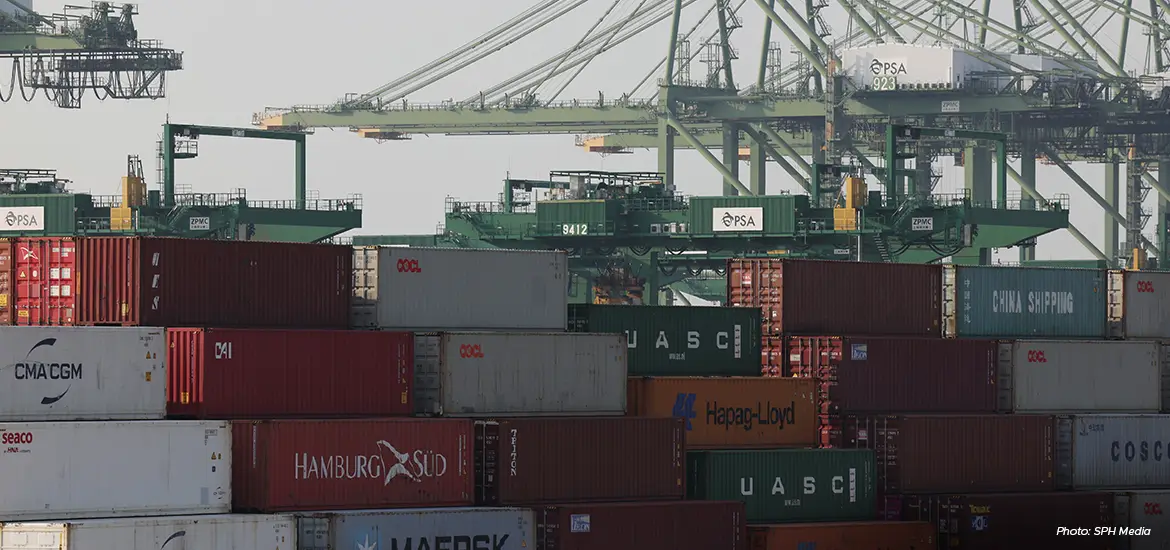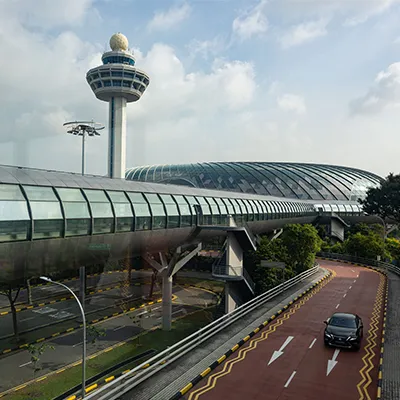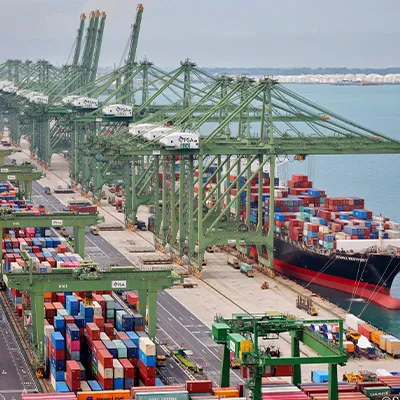According to a December 10 report by the International Air Transport Association, airlines are projected to achieve an all-time high in cargo tonne-kilometres (CTKs), with demand expected to increase by 11.8 per cent year on year in 2024.
CTKs measure the volume of freight transported over a given distance.
Mr Tirschwell said air cargo will grow again in 2025 “if severe disruption is faced on the ocean front”.
While it is typically a last resort to divert from ocean to air given the costs, “companies will make hard choices if forced to in order to maintain revenue and market position”, he said.
A Singapore Airlines (SIA) spokesman told ST that the rise in its cargo volumes in 2024 was due to higher utilisation of freighter aircraft and higher bellyhold capacity from the increase in its passenger fight services.
“SIA remains cautiously optimistic on the outlook for our cargo business for the rest of the financial year ending 31 March 2025,” the spokesman said, adding that it expects demand for airfreight services to remain strong going into 2025.
“We will continue to focus on our key verticals and e-commerce to drive cargo performance, and will continue to monitor key trade lanes and adjust capacity to meet demand.”
Changi to focus on e-commerce in 2025
SIA’s focus on e-commerce is no coincidence.
Among the other reasons for the surge in 2024 airfreight is a boom in e-commerce fuelled by mega platforms like China internet company PDD Holdings’ Temu and privately owned Shein.
Mr Lim Ching Kiat, executive vice president of air hub and cargo development at Changi Airport Group (CAG), told ST in an interview that cargo capacity at the airport’s existing facilities will be tight moving forward.
To optimise space at the existing Changi Airfreight Centre (CAC) and Airport Logistics Park Singapore (ALPS), which are running near full capacity, CAG must prioritise the tenant mix and type of cargo it plans to handle until fresh capacity comes on stream from 2030.
Mr Lim said it has already developed an ecosystem to handle pharmaceutical products within the airport, and is now talking to partners like SIA Cargo and SATS to build up a similar supply chain for e-commerce.
“The e-commerce trend keeps evolving. Previously, e-commerce players would ship their goods to Singapore and utilise the warehouse of a third-party logistics manager before the parcels are sent to customers,” he said.
Now, players like Shein and Temu are doing direct shipping, in which parcels are delivered to customers directly.
“We are watching to see how the business model changes and if these players will require specialised warehouse facilities and equipment to track those parcels, and how we can work with them,” said Mr Lim.
Singapore well positioned as global supply chain hub
When fully developed from the mid-2030s, Changi Air Cargo Hub will boost the airport’s overall cargo-handling capacity from three million tonnes to 5.4 million tonnes annually.
Changi Air Cargo Hub will comprise the second ALPS announced in October, the upcoming Changi East Industrial Zone, which is part of the Changi East development comprising Terminal 5, as well as the existing ALPS and CAC.
“This will give us significant new capacity to support further expansion of the air express integrators, regional distribution centres and air-forwarding activities within the airport free-trade zones,” said EDB’s Mr Goh.
He noted that manufacturers and cargo owners from various industries, such as Henkel, 3M, Schneider Electric and Asahi, are already orchestrating their regional and global supply chains from Singapore.
Air express integrators, such as DHL Express, FedEx and UPS, are also using Singapore as their secondary air cargo processing hub in Asia, while emerging player SF Express from China recently opened its airside logistics centre at CAC.
Air express integrators are companies that provide end-to-end logistics services for time-sensitive shipments, combining air transportation with integrated ground delivery networks.
On the seaport front, Tuas Port will become the world’s largest fully automated port when fully completed by 2040, with an annual handling capacity of 65 million TEUs.
As at October, 10 of the 66 container berths at Tuas Port are already operating, with one more berth expected to begin operations by the year end.
An upcoming warehousing facility, PSA Supply Chain Hub @ Tuas, will be ready by 2027.
Source: The Straits Times © SPH Media Limited. Permission required for reproduction.









